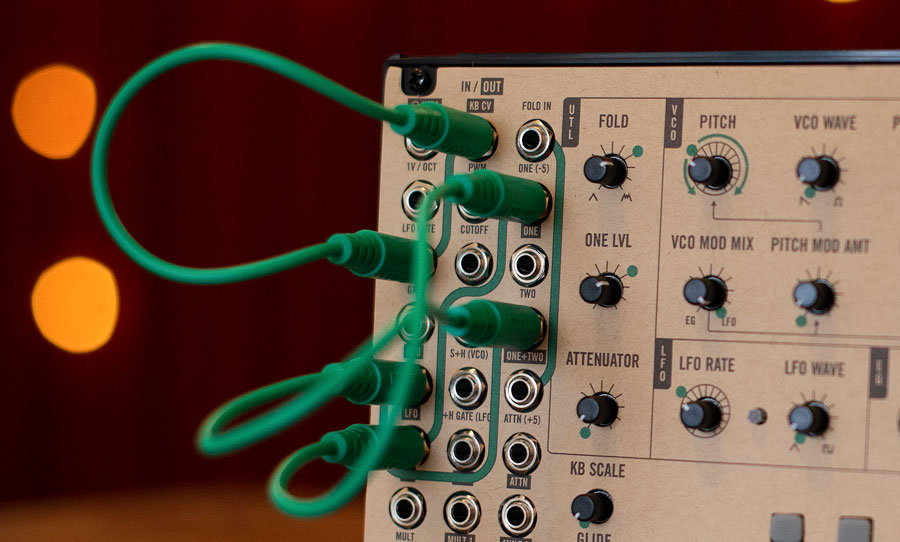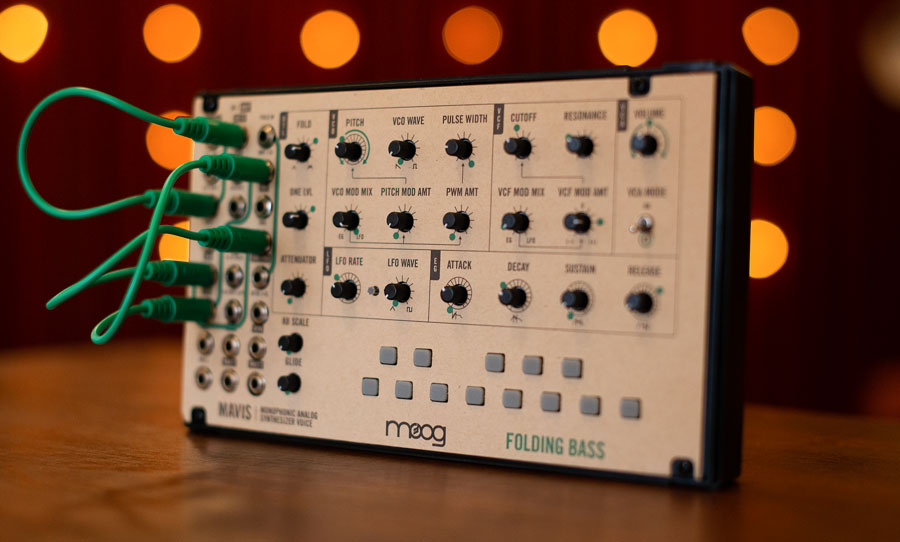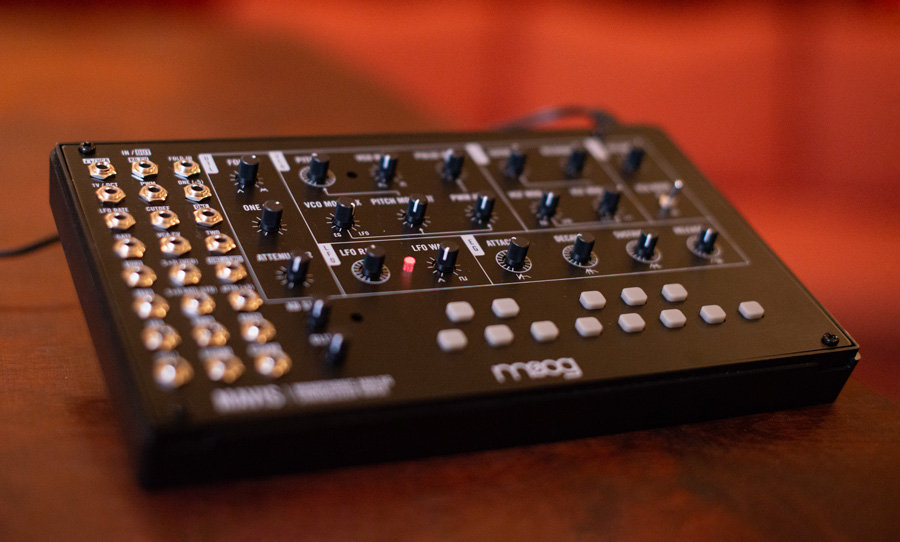Moog released a semi-modular analog synthesizer mid-last year called Mavis. This powerful, build-it-yourself kit brings the sound of Moog to your studio — without the expense — in a tiny package.
Moog — probably the most well-known name in the land of synths — knows that musicians from all ranges of experience (and bank balances) love their sound and designs. They also know that those who fall into the wormhole that is synthesizers sometimes want to get under the hood occasionally.
The Mavis is a build-it-yourself kit (requiring only a small Phillips head screwdriver) that will surely be your gateway to modular synthesis. It’s a very powerful monosynth with enormous patching capabilities and sound shaping tools. Not only is it a standalone desktop synth with that Moog sound, it’s also a 24-point CV controllable module (44hp). Pop it in a Eurorack or pair it with Moog’s other semi-modular instruments.

The Mavis is a monophonic analog synth that comes with all you need to get started including and more — there’s all the screws, nuts and bolts, 5 patch cables, a dust cover, a dedicated 12VDC power supply, a couple of preset overlay cards to get you started, a very cool Moog poster, a calibration tool and a quick start guide with some words from Moog VP of engineering Steve Dunnington. He mentions something of a secret hidden feature — more on that later.
Mavis seems simple, but it’s quite complex in its routing ability and what’s featured on the unit. It’s got two oscillators, an ADSR section, a VCF (using Moog’s ladder filter), a patchable sample and hold circuit (labelled S+H), Moog’s first-ever wavefolding circuit, a mixer, a mult section (for multiple signal patching) and the LFO section has a dedicated rate light — handy!

Moog Music has made another video in their Hivemind series called ‘Hivemind II’ in collaboration with electronic music producer and Moog Product Strategist Max Ravitz (a.k.a. Patricia) that combines eight Mavis synthesizers in a dynamic audiovisual performance.
Each Mavis in this setup provides a different element in the song, ranging from wave-folded kick drums to 808-inspired cymbals and double-VCO basses to folding leads. All eight Mavis synthesizers in this performance are sequenced by the Winter Modular Eloquencer with a touch of delay provided by the OTO Machines BIM and the Chase Bliss x Meris CXM 1978 reverb, adding a bit of dimension to the mix.
There’s ample controls on the Mavis like KB Scale, Glide, and a VCA section that has volume and VCA mode of either EG (Envelope Generator) or On. It’s got a 1-octave keyboard, and while it looks like it might not be inspiring to play — or could be mistaken for not being a keyboard — it reacts really well to touch and is a super handy feature for something of this size.
Grabbing one of the overlay cards called ‘Folding Bass’ and following the very easy-to-understand instructions, I got exactly that — a big bass sound from a tiny synth. Playing on the built-in keyboard was great to audition the patch, and it was a good starting point to tweak to a sound of my liking.

If you jump on Moog’s site you can get access to an Exploration Patchbook — these are different to the supplied patch overlay cards. For those of you wanting more keyboard range or trigger using a sequencer, you’ll need to use something with a CV out. This is common enough for you to buy something like Arturia’s Keystep, or you might already own something!
There’s no speaker nor is it battery-powered, but I’m okay without these things as that drives the cost of the unit up! Speaking of drive…that secret hidden feature is that Wavefolder can also be used as an audio input to fold (also known as drive/distortion) taking signal from where you desire!

Moog made a video that explained the patching of the Wavefolder:
“An external signal patched into the Wavefolder goes through the Wavefolder then to the VCF then to the VCA — bypassing the VCO. To patch the VCO in — take the VCO output to the Fold input.”
Since the original release Moog have released a brand new patch book — done in the quality that you expect from Moog — offering brand new patch ideas to lead sound explorers into new territories.
So go get yourself one and get patching! The Moog Mavis comes in at $599 AUD street price, but sits around $519 AUD in most good music stores. For more info on it head over to moogmusic.com



